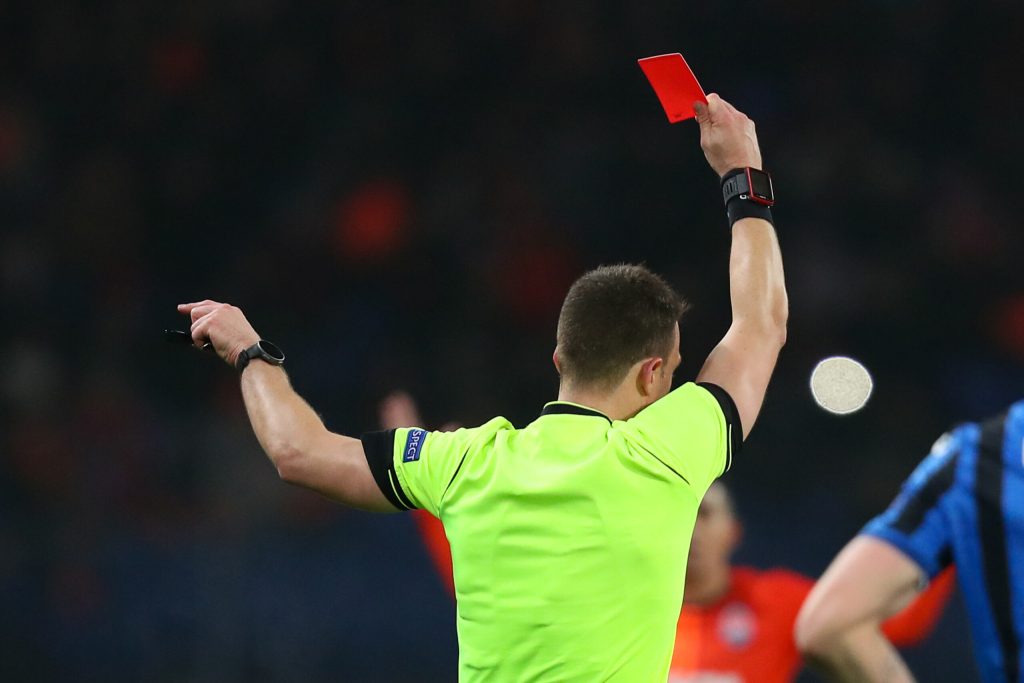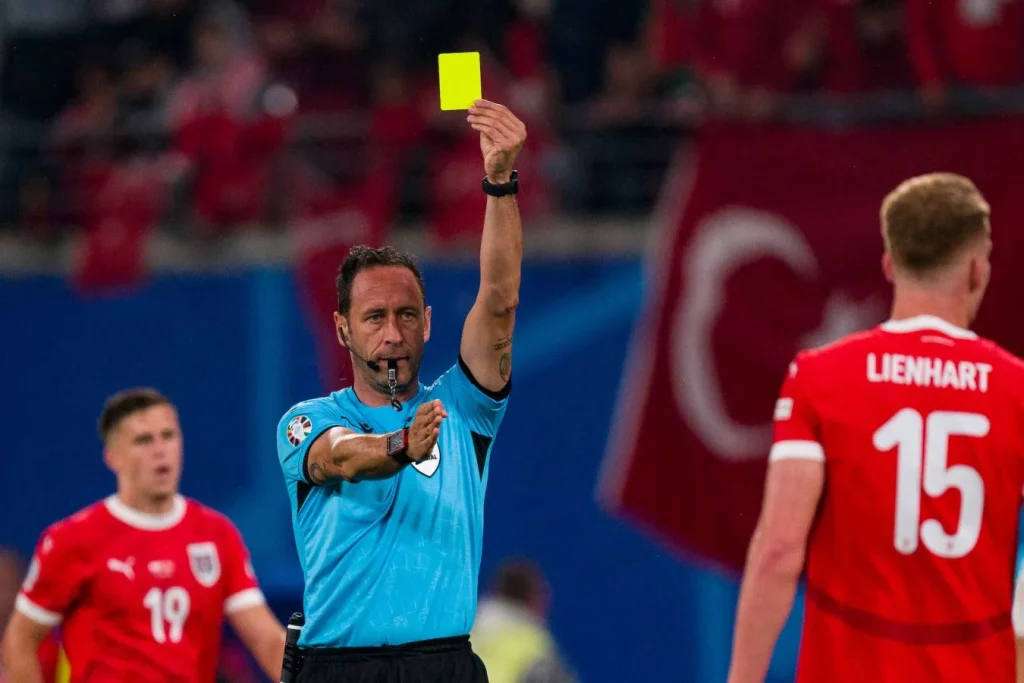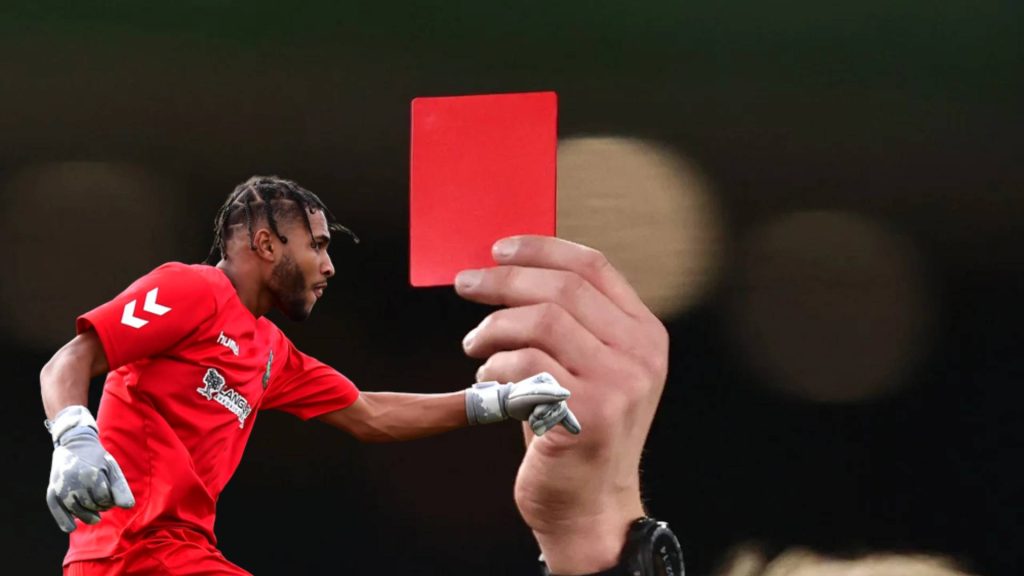Penalty card bets are always among the top side bets sought after by players at MILYON88, especially in intense matches. Fierce disputes and “hot” situations make penalty cards an unpredictable and attractive factor in sports betting. MILYON88 will share details about penalty card bets and effective betting tips to help you master this “unique” type of bet.
What is a penalty card bet?

Penalty card bets are a form of football betting in which players will predict the number of yellow and red cards drawn by the referee during the match (usually only counted in 90 official minutes).
Reasons to bet on this form:
- Does not depend on the score: Just need to analyze the correct playing style, referee, and nature of the match.
- High payout rate: Few players, easy to encounter skewed odds from the bookmaker.
- Various types of bets: Over/Under, handicap, first/last card, etc., are easy to choose according to tactics.
- Suitable for tense matches: Derby, knockout matches often have many cards, easy to predict.
- Advantage for good analysts: Those who understand the data will have a clear advantage.
Popular types of penalty card bets
To effectively predict today’s penalty card bets, you first need to clearly understand the popular types of penalty card bets that bookmakers like Saba Sports often apply. Below are the most popular types of penalty card bets today that players need to know.

Penalty card over/under bets – Easy to play, suitable for people who like statistics
Penalty card over/under bets are simple, easy-to-understand card bets, suitable for beginners or those who like numbers. The bookmaker gives a threshold to predict the total number of cards in the match (for example: 4.5). You bet Over if you predict the total number of cards will be more, or Under if you predict it will be less.
Example: Arsenal vs Tottenham (a London derby is often very tense)
The bookmaker gives the over/under mark: 4.5 cards
The match has a total of 6 cards → Over bet wins
If there are only 3 or 4 cards → Under bet wins
Experience: Apply this bet to derby matches, or matches between teams with a history of many collisions, such as Argentina vs Brazil, Inter Milan vs AC Milan, etc.
Handicap card bet – For those who understand the gameplay
This type of card bet works similarly to the Asian handicap: a team is set by the bookmaker to give or receive a card handicap compared to the opponent.
Example: Liverpool gives Man United 1.5 cards
Liverpool receives 1 card, MU receives 4 cards → total difference of 3 cards → bet Liverpool wins
If Liverpool and MU receive the same number of cards → bet Liverpool loses
This bet is extremely suitable when a team with a “heated” style, like Uruguay, Nigeria, or Atlético Madrid, faces a team that tends to control, like Spain or Man City.
1×2 Card Bet – Easy to understand, quick bet
If you don’t want to calculate too much, the 1×2 Card Bet is a straightforward choice:
- 1: Home team receives more cards
- X: Both teams receive the same number of cards
- 2: Away team receives more cards
Example: Match between Newcastle (home team) vs Leeds (away team)
You think Newcastle plays harder and is more likely to receive more cards → bet “1”
If both teams receive 2 cards → bet “X” wins
If Leeds receives more cards → bet “2” wins
Suggestion: Analyze the style of the two teams clearly, for example, the home team is Serbia (aggressive), against the away team is Japan (technical, few fouls).
First Card Bet – Bet on the progress of the match
This is a special type of card bet, requiring you to read the playing psychology of each team, each player, and predict which team will receive the first card in the match.
Example: Brazil vs Colombia – you know Colombia usually “warms up” from the start → bet on Colombia getting the first card.
Sharing experiences in betting on card bets from betting experts
Winning a bet requires not only luck but also knowledge and an accurate reading of the match. With card bets, emotional factors are not enough. Players need to rely on data, playing style, and player psychology. Below are the factors that must be analyzed if you want to effectively bet on today’s card bets.

Research data and head-to-head history
Let’s start by analyzing the numbers:
Average number of cards in the last 5-7 matches of each team.
Is the history of head-to-head matches “tense”? Have there been any major collisions?
Have there been red cards in recent encounters?
Read the gameplay and tactics
Each team has a different playing style, which directly affects the ability to receive cards:
Teams that press high, constantly close → easily make mistakes, many cards
Teams that keep the ball, pass short, have fewer disputes → often receive fewer cards
Famous “hot-headed” players like Casemiro, Pepe, and Gattuso are always the focus of receiving cards
Tip: Look at the lineup and tactical diagram before the match to predict the game situation and the possibility of collision.
Referee – An overlooked factor, but it has a huge influence
In the card betting, the referee is the “card distributor”. Each referee has a different style of playing:
Strict referee: Usually draws many cards, even for minor mistakes → bet on over bright cards
Referees tend to warn, only draw cards for serious mistakes → easily get under cards
Tip: Check the referee’s “average number of cards/match” statistics. If > 4.5 cards/match → consider betting over.
Consider the nature of the match
Emotional factors in the match directly affect the possibility of getting a card:
Derby, “enemies on a narrow road” → players often tackle fiercely, without mercy
The match decides the ticket to the next round → tense, easy to lose composure
Meeting an opponent who has caused controversy → penalty cards are hard to avoid
Therefore, many long-time betting experts often choose penalty card bets as a “special weapon”, easy to win if reading the psychology and situation correctly.
